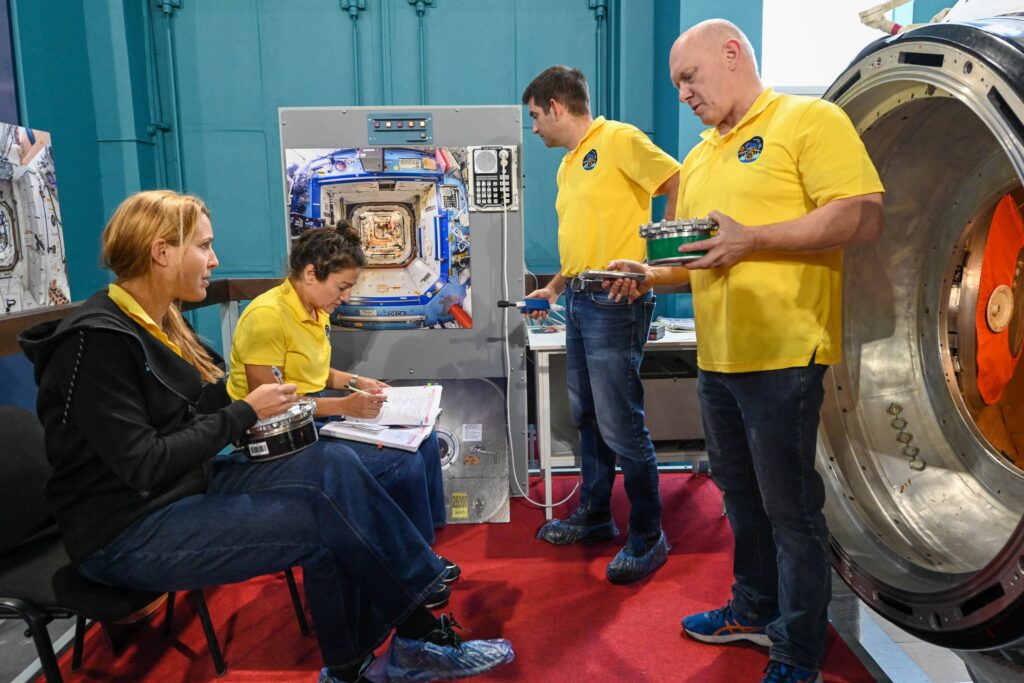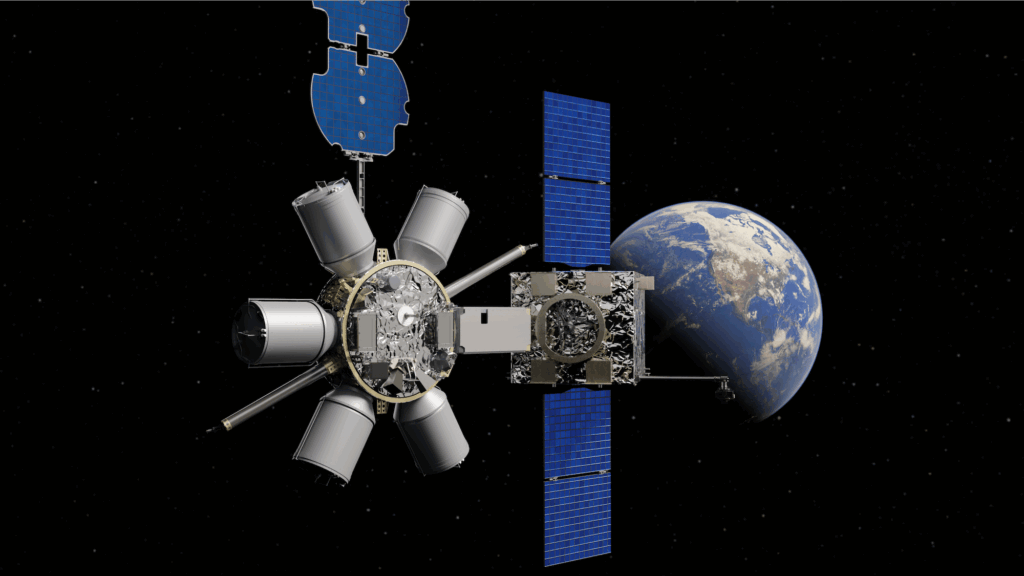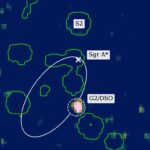Now Reading: Chinese spacecraft prepare for orbital refueling test as US surveillance sats lurk nearby
-
01
Chinese spacecraft prepare for orbital refueling test as US surveillance sats lurk nearby
Chinese spacecraft prepare for orbital refueling test as US surveillance sats lurk nearby


HELSINKI — Two Chinese Shijian satellites appear to be maneuvering towards a rendezvous and docking in geostationary orbit, with U.S. surveillance spacecraft also in the vicinity.
China’s Shijian-21 and Shijian-25 spacecraft, designed for servicing and refueling, were within about two degrees of longitude—or roughly 1,500 kilometers—of each other in geostationary orbit as of June 9, according to a social media post by space situational awareness (SSA) company COMSPOC.
The spacecraft are operating around geostationary orbit (GEO), approximately 35,786 km above Earth’s equator. Orbiting in GEO means a spacecraft appears fixed in the sky above a point on the Earth below, orbiting at a rate matching the rotation of the Earth. Raising or lowering an orbit above or below GEO allows them to drift either west or east respectively.
Shijian-25 was launched in January to test on-orbit refueling and mission extension technologies, while Shijian-21 was launched in October 2021.
Shijian-21 has already executed its primary mission, docking with the defunct Beidou-2 G2 navigation satellite and towing it into a graveyard orbit above GEO. It had been passively drifting westward in GEO for much of the last year, according to COMSPOC, suggesting it may have run out of fuel, but it recently initiated maneuvers taking it towards Shijian-25.
Shijian-21 has since parked at 127.5 degrees East. Now, Shijian-25 is drifting eastwards towards Shijian-21. The two satellites are in a phased orbit, meaning their key orbital elements—such as semi-major axis, eccentricity, inclination, right ascension of the ascending node and argument of perigee—are nearly identical, but remain separated by a distance along the same path. This minimizes fuel required for a future rendezvous. The pair are expected to meet June 11 at current rate of approach, though Shijian-25 will likely slow down as it closes in.
It is expected that Shijian-21 and 25 will perform proximity operations and execute a docking procedure. Shijian-25 was developed and manufactured by the Shanghai Academy of Spaceflight Technology (SAST), and is to be used for “satellite fuel replenishment and life extension service technology verification,” according to a January SAST statement.
Shijian-21, likely designed with such tests in mind, makes a good target for China’s first on-orbit refueling test in GEO. The mission appears set on demonstrating capabilities for maintaining and prolonging the operational lifespan of satellites already in orbit. Such capabilities can reduce costs and improve sustainability in space operations, while also reducing debris.
The People’s Liberation Army is known to be working on the technology and training tools for on-orbit satellite refueling for both peacetime and wartime scenarios.
COMSPOC said the activities in GEO were observed by OurSky and Observable.space, supported by COMSPOC’s optical tracking network. It also detailed recent high-energy maneuvers, suggesting a deliberately coordinated proximity setup, in a June 6 post.
Orbital Voyeurism: GSSAP satellites close in
Shijian-21 and Shijian-25 won’t, as it stands, be alone for their orbital conjunction. American surveillance satellites USA 270 and USA 271, part of the Geosynchronous Space Situational Awareness Program (GSSAP), are in the vicinity to observe the expected operations.
“USA 270 and 271 now flank SJ-21 and SJ-25 from the east and west—potentially enabling favorable sun angles depending on the timing of closest approach,” COMSPOC noted June 9. USA 270 has previously been involved in games of “cat and mouse” in GEO with other Chinese satellites, such as Shiyan-12 (01) and (02).
COMSPOC notes that the developing event is occurring in a crowded and increasingly dynamic part of GEO.
“While these U.S. assets aren’t directly involved, their proximity adds complexity to the local SSA picture — and raises strategic awareness concerns,” the COMSPOC post read.
The Shijian-21 and Shijian-25 will not be the first servicing demonstration in GEO. Northrop Grumman’s Mission Extension Vehicle-1 (MEV-1) docked with Intelsat’s IS-901 satellite in 2020 and recently completed a five-year-long servicing mission. MEV-1 is now plane-matched with OPTUS D3 at 156.128 degrees East.
Stay Informed With the Latest & Most Important News
Previous Post
Next Post
-
 012024 in Review: Highlights from NASA in Silicon Valley
012024 in Review: Highlights from NASA in Silicon Valley -
 02Panasonic Leica Summilux DG 15mm f/1.7 ASPH review
02Panasonic Leica Summilux DG 15mm f/1.7 ASPH review -
 03How New NASA, India Earth Satellite NISAR Will See Earth
03How New NASA, India Earth Satellite NISAR Will See Earth -
 04And Thus Begins A New Year For Life On Earth
04And Thus Begins A New Year For Life On Earth -
 05Astronomy Activation Ambassadors: A New Era
05Astronomy Activation Ambassadors: A New Era -
06SpaceX launch surge helps set new global launch record in 2024
-
 07Space Force plans new ‘Futures Command’ amid pressure to speed up modernization
07Space Force plans new ‘Futures Command’ amid pressure to speed up modernization




















